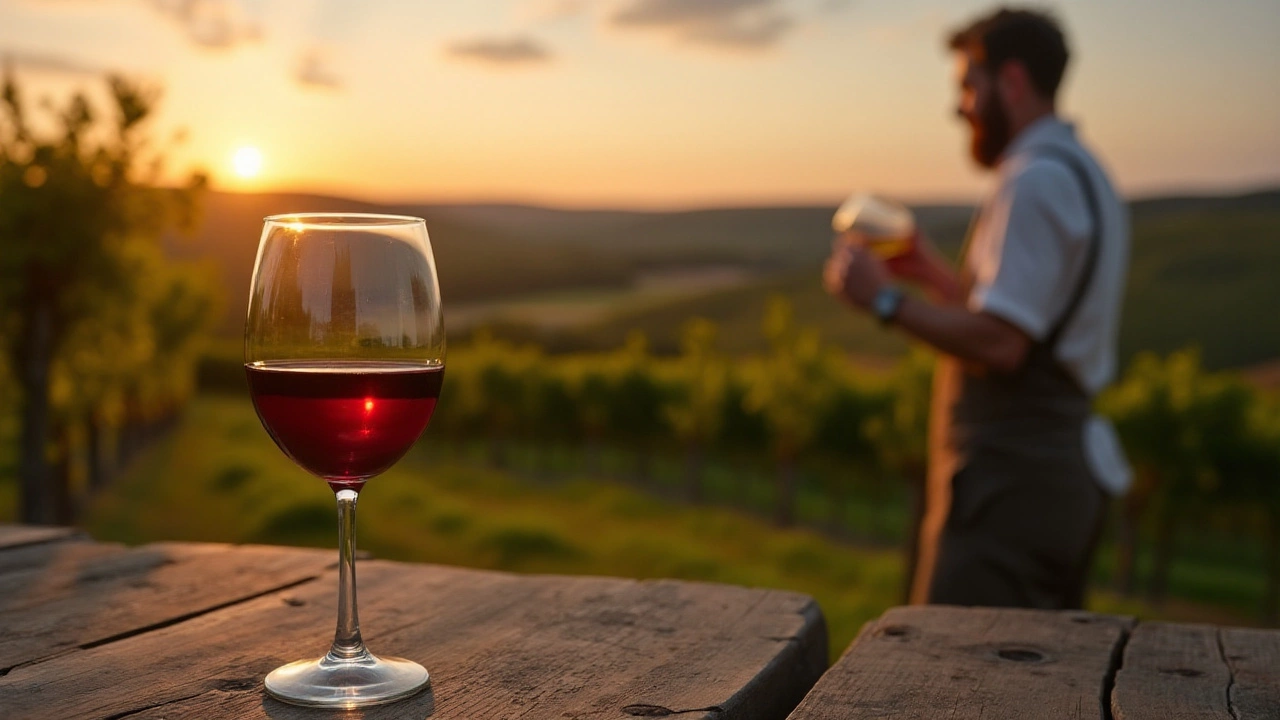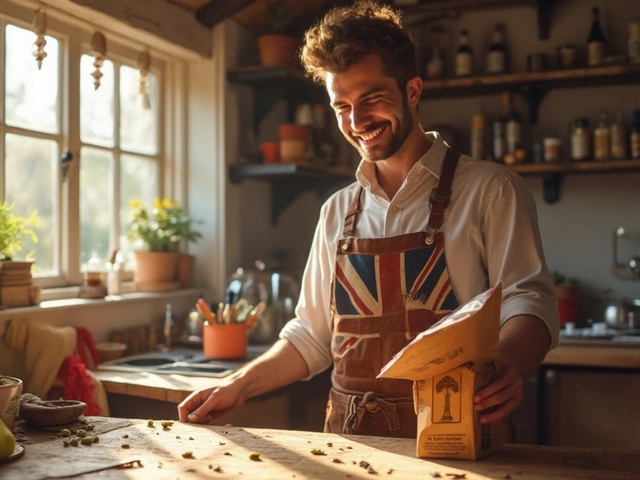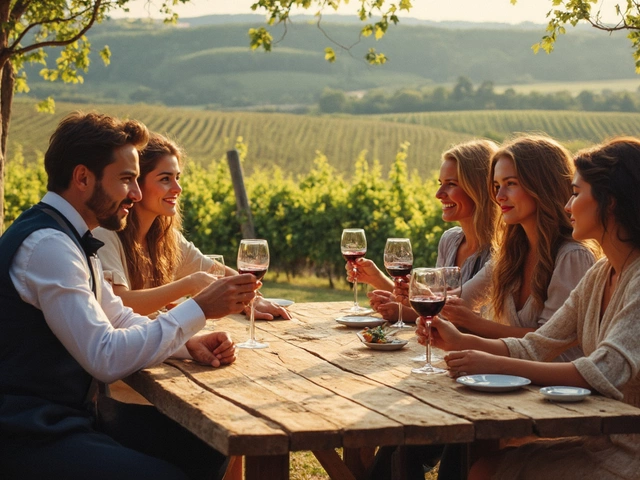If you've ever found yourself lost in a sea of wine bottles, unsure where to glance next, exploring the celebrated 3 B's could be your compass. Bordeaux, Burgundy, and Barolo are more than just regions; they're epicenters of flavor and history, each holding a revered spot in the pantheon of fine wines. But what really sets these wines apart, and why do they capture the imaginations of wine lovers across the globe?
Understanding these iconic wines begins with a journey through their landscapes, where the soil and climate produce grapes of distinct character. From the robust reds of Bordeaux to the elegant and complex flavors of Burgundy, and the boldness of Barolo, each tells a story waiting to be uncorked. Whether you're a seasoned connoisseur or just starting your wine discovery, delving into the signatures and pairings of the 3 B's will enrich your tasting experience.
- The Legacy of Bordeaux
- Unveiling Burgundy's Charm
- The Mystique of Barolo
- Tasting Tips for the 3 B's
- Pairing Suggestions for Each Wine
The Legacy of Bordeaux
In the world of wine, few regions command as much respect as Bordeaux. Nestled in the southwest of France, Bordeaux is more than just geography—it's a testament to centuries of vinicultural artistry. With a history spanning over two millennia, Bordeaux has honed its craft to perfection, establishing itself as a benchmark for quality and complexity in winemaking. The region's influence spreads across 60 appellations, producing a variety of wines that include the legendary reds like Cabernet Sauvignon and Merlot. Perhaps what makes this region stand out most is the unique blend of terroirs that allow these grape varieties to express sophistication in every sip.
The Bordeaux experience is deeply rooted in tradition, with estates known as châteaux dominating the landscape. Iconic names like Château Margaux and Château Lafite Rothschild offer more than just wine; they offer a taste of history wrapped in elegance and reverence. It's no surprise that Bordeaux wines have become synonymous with luxury and exclusivity, often fetching exceptionally high prices at auctions. Interestingly, the secret ingredient to Bordeaux's allure is the region's unique climate, which oscillates between Atlantic influences and the gentle warmth of inland France. This creates a particular set of conditions ideal for grape-growing, facilitating dynamic flavors that evolve over decades.
Despite its opulence, Bordeaux remains accessible to anyone willing to explore its riches. The true connoisseur knows that the region is not just about grand façades and prestigious labels; it's about discovering the endless stories encapsulated within its multiplicity of wines. You might encounter a hidden gem in a lesser-known appellation, such as Fronsac or Lalande-de-Pomerol, each offering its own twist on the Bordeaux formula. These wines carry the same pedigree but often at a fraction of the price compared to their first-growth counterparts, providing a treasure trove of flavors that are both inviting and exhilarating.
"Bordeaux is not just a region; it's a universe," noted wine expert Jancis Robinson. Her sentiment captures the endless possibilities and adventures that await those bold enough to delve into Bordeaux's depths. Indeed, Bordeaux stands as a testament to the magic that can be created when terroir, tradition, and human ingenuity collide.
The intricate classification system of Bordeaux further establishes its importance in the wine world. From the illustrious Médoc wines to the refined whites of Graves and the sumptuous sweet wines of Sauternes, Bordeaux's classification has guided enthusiasts through its diverse offerings since the mid-19th century. Each classification tells a story, a timeline of expertise molding the landscape into the multifaceted emblem of wine it is today. It’s not just about where the wine comes from or how it's made, but what it stands for—a profound legacy, a measure of quality.
Unveiling Burgundy's Charm
The Burgundy region, nestling in the heart of France, is a tapestry of cultural and vinous history. This land of rolling hills, ancient monasteries, and quiet villages has been cultivating its reputation for centuries. Known for its exquisite Burgundy wines, it is a place where wine is more than a drink—it's an art form. The locals say that tasting Burgundy is like stepping into a time capsule. With each sip, you can feel the weight of seasons carried by the vineyards and the hands that have tended to them over generations. Subtle differences in climate, or terroir as the French term it, mean the wines express unique tastes down to the very village they come from.
The main grape varieties thriving here are Pinot Noir and Chardonnay, both of which attain unrivaled elegance and complexity when nurtured in Burgundy's soils. While Pinot Noir brings out the region's mystical reds, delicate and haunting in their bouquet, Chardonnay offers whites that are rich but never heavy, balanced with a stunning minerality. Exploring each village in this tapestry—be it Gevrey-Chambertin, Pommard, or Puligny-Montrachet—introduces you to a symphony of aromas and flavors, each vineyard painting a distinct picture of its terrain.
"Burgundy wines are the purest expressions of their terroirs," says wine critic and author Jancis Robinson, highlighting the integral connection between the landscape and these cherished wines.
Choosing Burgundy wines might seem daunting due to their complexity and prestige. However, understanding its classification system provides clarity. The hierarchy begins with regional wines, simple yet straightforward. Climbing higher, you find village wines labeled according to their commune. Ascend further, and you reach Premier Cru, a notch below the pinnacle of Grands Crus, the most celebrated vineyards showcasing the utmost viticultural potential. Each level promises distinct nuances and revelations of Burgundy's character, ensuring there's always an adventure waiting in your glass.
The appeal of Burgundy extends beyond the bottle. The region's culinary traditions complement its vinous offerings beautifully. Imagine savoring the lightness of Pinot Noir with a succulent coq au vin or pairing a creamy Chardonnay with local cheeses. The wines carve out experiences, forging connections among people, meals, and conversations. Their charm lies in the timeless elegance and the stories they silently tell. As you swirl a glass, you're not just tasting wine—you're part of a continuum thousands of years in the making.
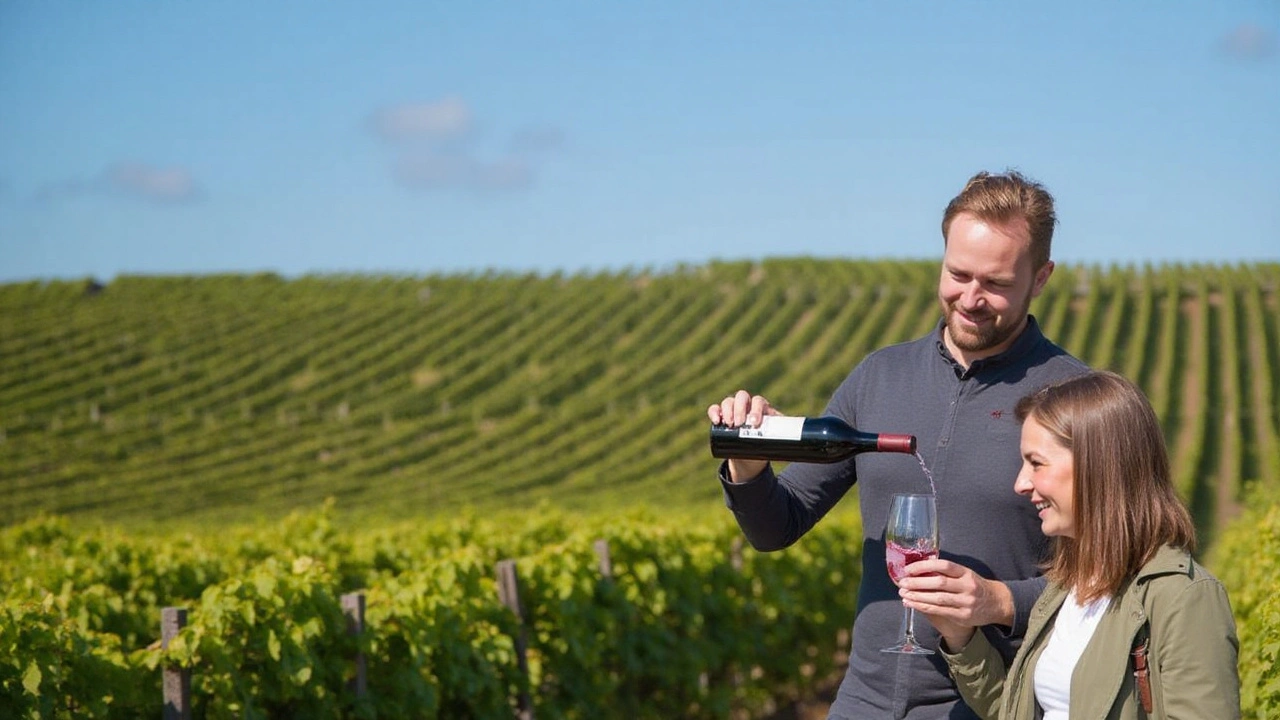
The Mystique of Barolo
Barolo is often hailed as the 'King of Wines and the Wine of Kings'. Nestled in the rolling hills of the Piedmont region in northwestern Italy, Barolo is crafted exclusively from the Nebbiolo grape, a variety that demands both respect and patience. The roots of this wine run deep into the terrain, where the calcareous marl soils and the unique microclimate play a pivotal role in shaping its identity. Barolo is not for the faint-hearted; it requires time to reveal its intricate layers, often reaching its peak after a decade or more. This aging process allows the wine to develop an extraordinary character, unveiling aromas of tar, roses, and ripe cherries, enveloped in a robust structure of tannins and acidity.
Historically, Barolo's journey began in the 19th century when it was first crafted into a dry, red wine at the behest of the Marquise of Barolo. Before this transformation, Nebbiolo was typically vinified into a sweeter style. The modern incarnation of Barolo represents a marriage of tradition and innovation, where winemakers balance between age-old techniques and contemporary advancements. Historically, Barolo was known for its prolonged fermentation and maceration times, which contributed to its intense tannic profile. However, recent shifts have seen shorter fermentation periods aimed at producing a more approachable wine, whilst still respecting the traditionalist methods.
"Barolo is like a work of art in a bottle; every sip transports you to the vineyards of Piedmont, evocative of its robust and elegant heritage." - Renowned Oenologist, Giuseppe D'Angelo
Understanding Barolo Styles
There are two distinct styles of Barolo - traditional and modern. Traditional Barolos are aged in large, old wooden casks known as botti, honing a more nuanced and earthy profile with pronounced tannins. On the contrary, modern Barolos often undergo aging in smaller barrels, like barriques, which impart a softer tannin structure and more pronounced fruit flavors. These stylistic differences provide consumers with a range of flavors to explore, depending on personal preferences. Whether you lean towards the austere and reserved traditionalist kind or the accessible modern expression, Barolo remains a compelling exploration of what wine can be.
Data from recent studies suggest that Barolo’s popularity continues to rise globally, with some 14% increase in export volume over the past decade. This rising demand is testament to the wine's growing status in both international markets and amongst aficionados. The juxtaposition of an intensely aromatic profile with a rich palate makes it a challenging yet rewarding choice for pairing. Typically, Barolo pairs well with hearty dishes such as braised beef, truffles, and risotto. This wine not only elevates these dishes but also enhances its complex attributes, melding seamlessly into each culinary experience.
Tasting Tips for the 3 B's
When embarking on a tasting journey with the Bordeaux, Burgundy, and Barolo wines, it is essential to immerse yourself in the distinct attributes each offers. Let's start with Bordeaux, a region celebrated for its powerful reds. These wines often exhibit a deep color and robust tannins, making them enjoyable companions for savory dishes. An important tip is to let Bordeaux breathe for at least an hour before sipping, as this helps to mellow the tannins and unlock an intricate flavor profile. Look for aromas of blackcurrant, plum, and subtle hints of tobacco leaf. Serve it in a wide-bowled glass to capture the bouquet, and gently swirl. This will release the aromas and accentuate its depth, giving you a fuller appreciation of what this historic region has to offer.
Moving to Burgundy, the wines from this region are known for their elegance and finesse, particularly the Pinot Noir and Chardonnay varietals. Burgundy’s intricate taste can be best appreciated by noting its transparency. Unlike the full-bodied nature of Bordeaux, Burgundy calls for more delicate treatment. Serve these wines slightly cooler than you would Bordeaux, but not too chilled as it may mask the subtleties. Look for floral and fruity notes such as ripe cherry or raspberry in the reds and citrus or apple in whites. Burgundy's complexity often reveals itself slowly, so take the time to savor each sip. Pair them with dishes that share an equal sense of refinement such as duck or soft cheeses. Remember the old Burgundy adage, ‘more is less.’ Drink it with mindfulness, allowing its nuanced personality to shine through.
Now stepping into the world of Barolo, often dubbed the ‘King of Wines’, largely due to its rich and potent character. Nebbiolo grapes give Barolo its distinct tannins and high acidity. This wine generally benefits from aging, and a bottle with a few years behind it will offer a smoother experience. Much like Bordeaux, Barolo needs to breathe, yet it can take even longer to fully open up — sometimes up to a couple of hours. When decanted well, expect aromas of rose, tar, and truffle. It prefers the big bowl of a wine glass, which allows the complex flavors to unfold. Pair it with robust, savory dishes like rich meats or truffle-infused pasta to complement its intensity.
Tasting wine is not just about flavor. It's a dance of aroma, texture, and history. Always approach each glass with an open mind and heart, respecting the story each wine has traveled. In the words of renowned sommelier Jancis Robinson, ‘Wine can bring joy to the most mundane settings and turns the ordinary into a celebration.’
‘Wine is sunlight, held together by water.’ - Galileo GalileiFollowing these tips, let each sip of the 3 B's lead you through the vineyards of Bordeaux, Burgundy, and Barolo, and discover the stories captured in every bottle.
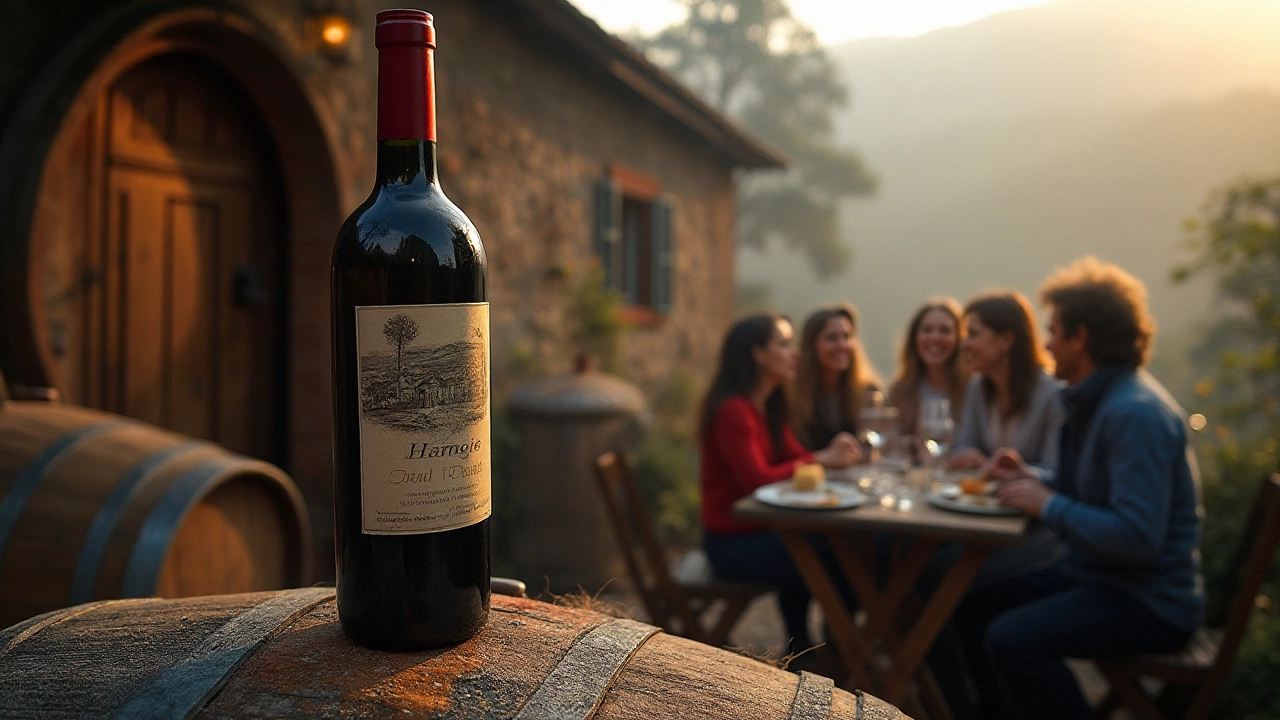
Pairing Suggestions for Each Wine
Finding the perfect pairing for Bordeaux, Burgundy, and Barolo can transform your meal into a memorable feast. Let's start with the renowned Bordeaux. Known for its deep and robust reds, this wine's bold flavors often mirror the lusciously vibrant landscape of its origin. A classic Bordeaux, often made from a blend of grape varieties such as Cabernet Sauvignon and Merlot, is a match made in culinary heaven with equally robust dishes. Consider pairing it with a hearty lamb roast, where the savory richness of the meat is counterbalanced by the wine's tannic backbone. For a versatile treat, Bordeaux also complements a juicy steak marinated with herbs. The interplay of the wine's plum and blackcurrant notes against the herbaceous marinade provides an exquisite tasting experience. Don't shy away from cheeses either; a mature cheddar or gouda can elevate the tasting session.
Transitioning to Burgundy, which excels in producing both exquisite red and white wines, the region’s Pinot Noir offers an elegant and complex character. When considering pairings, think about dishes that can match this wine's delicate structure. Imagine serving a mushroom risotto, where the earthiness of the fungi enhances the subtle earthy tones present in the Burgundy's bouquet. Additionally, consider a dish of duck breast glazed with honey, as the sweetness contrasts with the wine's undertones of dried cherries and spice, bringing harmony with every bite. White Burgundy, predominantly made from Chardonnay, is exceptional with seafood. Picture a creamy scallop dish that mirrors the wine's buttery richness, creating a seamless blend of flavors with every morsel.
Moving on to the imposing Barolo, often referred to as the 'King of Wines'. Its boldness and pronounced tannins call for equally potent flavors to marry with. Try pairing Barolo with a classic Italian affair like truffle risotto, a match that allows the dish’s creamy indulgence to buffer the wine's tannic elegance. The unmistakable aroma of truffles can also amplify the wine’s aromatic complexity. Alternatively, the robust flavors of beef braised with rosemary provide a synergy with Barolo's notes of tar and roses. For cheese lovers, aged Parmesan brings forth the oaky and leathery fragrances, making it a delightful companion.
"Wine is an experience as much as it is a flavor." – Sommeliers often emphasize that pairing isn't merely about matching complexity; it’s about drawing an emotional journey linked to the tasting.
To help visualize some potential classic pairings, here’s a simple guide:
| Wine | Pairing |
|---|---|
| Bordeaux | Roasted Lamb, Mature Cheddar |
| Burgundy | Mushroom Risotto, Duck with Honey Glaze |
| Barolo | Truffle Risotto, Aged Parmesan |
Experimenting with these suggestions can open up new dimensions of taste and aroma, truly enhancing the wine tasting journey. Each pairing provides not just a meal but an art of discovery, bringing out the unique essence of the 3 B's while celebrating the rich tradition behind every bottle.
